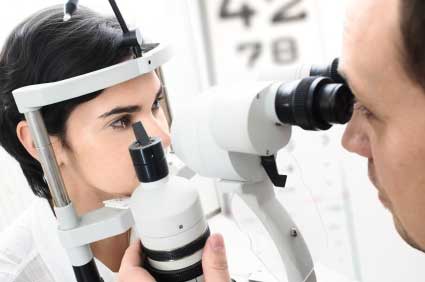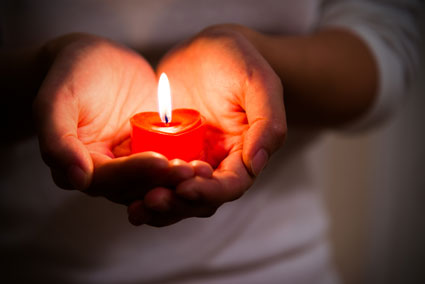Exam Format
The licensing examinations for ham radio are simple in format. The exam for each license class is called an element. All questions are multiple choice; there are no essays, oral questions, or demonstrations. For the Tech and General classes, there are 35 questions, and the Amateur Extra exam has 50 questions. A ham needs to answer 75 percent of the questions correctly to pass. Most hams can complete an exam in 15 to 45 minutes.
These questions are part of a large question pool, which is available to the public. Study materials, both in print and online, use these questions to help hams study. It is important to make sure that the study materials are current as the question pool does update from time to time. The ARRL website (arrl.org) lists the date of the most recent question pool.
While it may be tempting to memorize the questions and answers since they are part of the public question pool, it's better to try to understand the concepts behind the questions. These questions test knowledge a ham needs to have to be a successful amateur radio operator, so understanding these concepts will prove most beneficial.
There are four main categories of questions, and each category is represented on the exam. One category is rules and regulations, and it tests the basics a ham needs to know to operate within a legal framework. Another category is about electronics, which focuses on radio waves and other electronic concepts. There are also questions on operating and installing transmitters and antennas. Finally, hams need to know procedures for operating on the air.
Studying
For hams that learn best in groups, there are classes to help prepare for licensing exams. These can be found through local clubs, online, or even at electronics stores. Sometimes, exams are administered by VEC volunteers at the end of these classes, so it is possible to take a class and an exam in a day or two.
If a ham learns better individually using other resources, some of the best study guides are available from the ARRL. Their books teach the concepts behind ham radio to make successful hams and also contain practice exams. Ham University software is good for the ham that enjoys a more interactive experience. Online resources, while sometimes not as valuable as actual courses or books, do allow a ham to take sample exams and receive immediate feedback. Two websites with sample exams are qrz.com and eham.net.
Elmers
Morse Code
While a working knowledge of Morse code is no longer a requirement for licensing exams, many hams still find it to be an integral part of amateur radio. Learning Morse code is similar to learning an instrument or a new language; it takes time and practice. Most hams would recommend learning Morse code through the Farnsworth Method, which helps a student learn to recognize letters and words based on their sounds, not on the visual dot-dash table.
If a ham is interested, the ARRL offers a Code Proficiency Certificate for hams. This test is taken at a ham's radio; code is transmitted, and the ham translates the code and sends it in for evaluation.
Taking the Licensing Exam
A ham first needs to find and register for an exam session. Many classes and exam study sessions have a licensing exam at the end of the program, so hams in those cases have already found an exam time and place. However, hams can also look to the Volunteer Exam Coordinator organization (VEC) to find exam locations and times. The FCC website and the ARRL website maintain active lists of VECs. Hams should contact the VEC closest to them and find out if any exams are scheduled. If not, they can ask the VEC what options are available. The VEC's purpose is to help prospective hams obtain the licensing that they need.
When a ham has found a test session, it's smart to reach out to the contact person for that session to mention the element the ham plans to take and to make sure that the time, place, and other details are correct. This is a good practice because some test sessions may not allow walk-ins (but most do), and if the testing time or location needs to be changed, the coordinator know how to contact the ham with the updated information. Additionally, if a ham has any kind of disability and needs special accommodations, whether physical or educational, special arrangements must be made with the coordinator ahead of time.
Some testing sessions may be private, particularly in rural or other low-population areas. In these instances, a VEC may administer an exam in his or her home to a few people at a time.
New hams need to bring two forms of identification (one must be photo identification) and their Social Security numbers to the test session. Hams with current licenses seeking to upgrade must also bring their current original license and photocopy, any original Certificate of Successful Completion of Examination (CSCE) and photocopy, and an Federal Registration Number (FRN), if available. All hams also need to bring the exam fee as well as a few pencils and a calculator to use on the exam. VECs will score the exam before a ham leaves the testing area.
Licensing Paperwork
Upon passing a licensing exam, a ham now qualifies for a new license. To obtain the license, the ham first completes a Certificate of Successful Completion of Examination (CSCE). This is documentation of passing the exam, and hams should keep their copies of CSCEs for reference. Hams also need to complete NCVEC Form 605, which the FCC uses to issue licenses. This is also the form to use to upgrade, renew, or change name, address, or call sign for a current license.
Call Signs
After the FCC receives and processes the paperwork, it issues a new call sign to newly licensed hams. Hams without call signs cannot begin transmitting over radio until their call signs are issued, and it usually takes seven to ten business days to receive a call sign from the FCC following an exam. Hams that already have a call sign but have upgraded their licenses must add to their call signs "AG" if now a General license and "AE" if now an Amateur Extra license when identifying themselves on-air until their new call signs are assigned. While the FCC will mail paper licenses to hams, their website also maintains a database of call signs, and as soon as a ham's call sign appears there, the ham can begin transmitting. For an extra fee, a ham can change to a vanity call sign within certain requirements. The ARRL website shows what's available and can help with registration.
Keeping Updated
Contacting Other Operators
Listening on Different Bands
Depending on the band you are listening to, you will find a variety of conversations going on. High Frequency (HF) bands and Shortwave bands differ from Very High Frequency (VHF) bands. When you HF bands, a ham can find a contact on virtually any frequency that can be clearly received. But, conversations on the VHF band are most often heard using repeaters. A repeater, as we previously learned, is a device that receives radio signals on one frequency and then repeats them on adifferent frequency. Repeaters allow ham operators with weak transmitters to broadcast conversation over a greater distance. A low-strength signal is picked up by a repeater, and then the repeater sends the signal again.
Hams typically find that other ham operators tend to concentrate on specific frequencies. While there are no rules governing which frequencies to use, there are many fans of low level frequencies such as 14.060 MHz. Mhz is an abbreviation that means megahertz. Frequencies are measured in the unit of measurement called Hertz, which measures cycles per second. A megahertz is one million hertz. Hams usually find other operators on the 14.060 MHz frequency and this provides a way of like-minded individuals to congregate and meet on the air. Such a popular frequency is called a calling frequency.
Sub Bands
Within each band, there are specific frequencies that are reserved for different types of transmissions. For example, in a ham radio band within the HF band, there are specific frequencies for data, voice, and digital transmissions. Voice conversations are often referred to as "phone transmitting." So it can be said that phone transmitting is only permitted at certain frequencies, or sub bands. In the United States there are very specific rules for sub bands, but rules are much less restrictive in other countries. A complete chart of sub bands can be found on the American Radio Relay League (AARL)'s website atwww.AARL.org.
Tuning a Signal
In order to tune your ham radio to a specific frequency, you simply turn the frequency knob until you find your desired frequency. Inside the radio, there is a Variable Frequency Oscillator (VFO) that adjusts the radio's frequency when the knob is turned. The display on your radio will report which frequency you are tuned to.
You might need to use special equipment to tune into certain frequencies � depending on the type of signal you wish to receive. On FM signals, for example, you do not need any special equipment as you are simply listening for conversations. But, for RRTY (radioteletype) signals, for example, special equipment is needed. We will discuss RRTY later in this chapter.
To tune your radio, select the type of signal you wish to receive, for example, Morse Code or FM. If your radio uses a squelch control, which lowers the audio on your radio unless a strong signal is present, you should turn off the squelch control to allow all signals to come through. This will enable you to hear very weak signals, if you so wish.
Morse Code
Morse Code is often referred to as CW, which is an abbreviation for Continuous Wave. To tune into Morse Code, set your radio to the CW mode. If your radio has more than one filter available, set your radio to a wide filter. A wide filter will enable you to tune into many stations, while a narrow filter will block out nearby radio waves. You can adjust which filter you are using by adjusting the Wide/Narrow control on your radio. Then, you simply adjust the tuning knob until you can hear Morse Code being transmitted. The pitch of the radio will change depending on the frequency selected; some pitches are low and comfortable while others tend to be crisper. After your selected frequency is tuned in, you can then change to a narrow filter which will help to block interference from nearby radio signals.
Single Sideband (SSB)
FM Radio Signals
FM stands for frequency modulation and it is the most commonly used method of voice transmission on the VHF and UHF bands. As with other types of signals, your radio's squelch control should be turned off so that noise can be heard. This is referred to as opening the squelch. You can turn the control back on when you have tuned to a frequency you wish to receive.
Radioteletype (RRTY) Signals
RTTY signals contain characters, which each character containing a specific pattern of tones. Special equipment is required to decode the characters. Most hams use computers with software that decode the characters and convert them into words. To tune into an RRTY signal, set your radio to data mode or RRTY mode. Adjust the tuning knob as you would for any other type of signal to a frequency you wish to receive. If your computer is connected properly to the radio, the tones will be captured and converted to text.
It is common practice that digital transmissions such as RRTY, Morse Code, and other data signals are sent at the lower end of the frequency range. On the higher end of the range, you will find voice transmissions, or ragchews, as they are commonly called. When tuning into a band, most hams use the widest filter available so that they can receive as many signals as possible.
Beacons
A beacon is a transmitter that sends a continuous signal on a specific frequency. Beacons help hams to determine which frequencies are "open." Beacons are in operation throughout the entire world, and they are run by both professional and amateur operators.
Types of Contacts




















